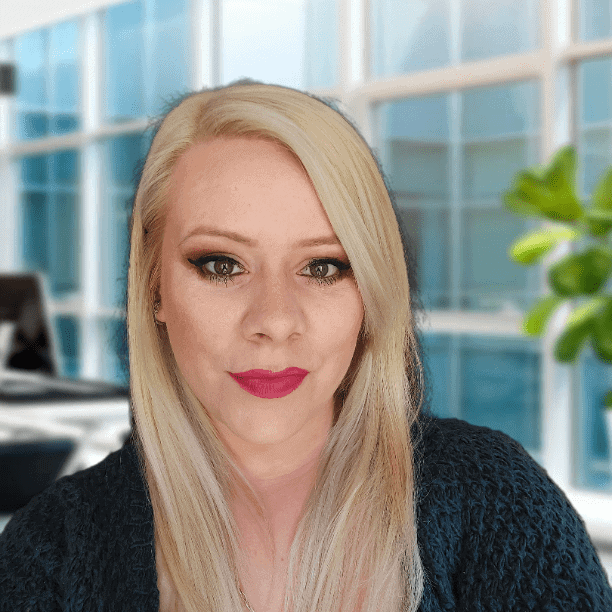
In a world where emotional and psychological challenges often seem insurmountable, Kathryn Bikle, LMFT, SEP®, and Certified Labyrinth Facilitator, offers a unique and holistic approach to healing. With her practice based in Pasadena and the greater Los Angeles area, Kathryn seamlessly blends her expertise in Somatic Experiencing® Trauma, depth psychology, and creative arts to support her clients’ psychological growth and recovery from emotional wounds. Kathryn’s multifaceted background as a licensed Marriage & Family Therapist, theater director, actor, and presentation skills coach adds a rich depth to her therapeutic practice. Her innovative methods, which include dream work, journaling, art therapy, and mindfulness, empower individuals to make healthier choices and embrace their authentic selves. In this exclusive Mystic Mag‘s interview, we delve into Kathryn’s unique therapeutic techniques, her philosophy on emotional healing, and how her diverse experiences shape her work with individuals, couples, families, and groups.
Can you describe how your background in theater and acting influences your approach to therapy and trauma work?
My passion for theater and acting has always been rooted in a fascination with the psychology of individuals, their relationships, and the events of their lives which cause them to make certain choices about their behavior (not always good!). The exercise of delving into a character that I am going to act out on the stage (or direct) has helped me enormously in gaining a deep understanding into many lives that are completely different from my own. When I begin the process of portraying a character, I have to find a way to connect to their inner core and to find some empathy for the choices they make, regardless of whether I agree or disagree with their decisions in the play. The experience of acting and directing many different kinds of characters in plays has taught me a method of finding deep empathy for a huge array of personalities and their life choices which I bring into my therapy work by approaching each new client from a perspective of respectful curiosity and compassion.
I am intrigued by what happens when challenging things happen to people and how that affects their sense of self and their roles in relationships going forward. The experience of working to portray characters in classical tragedy has given me the opportunity to explore the huge emotions that arise from these stories in the safety of a “pretend” environment. Because it’s a play, you can step out of your character’s suffering at the end of the rehearsal and go home to your normal life. This opportunity to go deeply in and come back out of emotional pain, knowing that you are okay, builds emotional resilience and a much greater capacity to sit with and hold suffering. Plus, it provides you, as the therapist, a model for working with trauma clients: going in just enough to touch the suffering, holding that and acknowledging it with them, and then bringing them back out to the present to the safety of your therapy office. This pendulation between the trauma and the healing is part of the Somatic Experiencing® Trauma model of working to release trauma stuck in the body and move towards a healing and wholeness.
When I work with couples and often, also with individuals in a dysfunctional relationship, I rely heavily on my theater training. The experience of acting or directing a scene where the characters are in disagreement with each other is a fabulous training ground for seeing what happens to the dynamic when one person chooses to say one of their lines in the repartee from a different emotional place: for example, more/less aggressive, more/less empathetic, louder/softer, etc. It’s amazing how the whole emotional trajectory can change if there is even one tiny difference in the expression of the underlying emotion in the argument! So, when I work with couples, I work to slow down a re-enactment of a typical argument and help them explore what happened emotionally, for example, to the husband when the wife used a certain tone in her delivery. Sometimes we discover that the husband is highly triggered by that tone of voice as it brings up painful memories for him of his overly critical mother. The wife may not have been aware of this and because we have slowed it down in an emotionally regulated way, she gets an insight that she was not intending to come across as critical, she thought she was just using her “normal” voice but realizes that in the heat of the argument, she may have been using her “lawyer” voice. If we revisit the exchange, giving the wife the opportunity to modify her tone, or even her choice of wording, the exchange may go much better. So in this way, we can unpack where the underlying emotional experiences arise in a verbal exchange and help the couple to be able to bring awareness to their communication styles so they can tolerate the discussion by staying emotionally regulated and so come to a better conclusion; with hopefully, agreement on both sides.
How do you integrate depth psychology techniques like dream work and sand tray into your sessions, and what benefits do you see from these methods?
Working with the images of dreams and sand tray gives me more direct access into what’s going on in the psyche of the client, what the issues are that are calling for attention, and the direction of the client’s psyche is suggesting is the most effective route for healing. Healing, in this regard, can mean the path towards positive growth of the Self, as well as insight into relationships that are presenting challenges to the client in waking life. The images that come forward in dreams and other projective modalities like sand tray or art therapy, come directly from the client’s unconscious. In Jungian depth psychology work, we believe that the Psyche knows what it needs to grow/heal. So, the images from dreams, daydreams, art, the imagination, etc. offer a window into what is going on at the unconscious level for the client. Exploring these images’ possible meanings and their relationship to what is going on in the life of the client brings a great deal of insight into the therapy that might otherwise be hidden.
For clients with trauma, or for clients and children where the trauma may reside the preverbal level, working with sand tray, art, and images from dreams or the imagination can help provide a means for expressing and processing traumatic material without language.
Depending on the needs of the client, I may ask them to share their dreams with me or invite them to do sand tray or art as a means of opening a path towards understanding what needs to be healed and where they are in the process of doing that. The beauty of working with images from the psyche in this way is that the discerning therapist can use this work as both an assessment tool as well as a means of processing trauma. It’s a great way of working with children because they may not be able to articulate clearly the issues that are troublesome in their lives. And they have so little power to make changes that could provide them any relief from suffering.
What type of services do you offer?
I have a private psychotherapy practice in Monrovia, CA where I see clients in a hybrid of in-person and TeleHealth. My clientele is a mixture of adult individuals, teens, couples, and the occasional family. I am not seeing children right now other than teens, although I did for many years.
I am a Certified Labyrinth Facilitator, Somatic Experiencing® Trauma Practitioner, and a BodyDreaming® Practitioner. I offer workshops that integrate Authentic Movement (Embodiment work) and Voice with psychodynamic modalities such as dream work, art, and mindful meditation that introduce participants to the process of inner work and personal self-growth. I have just started a Dream Circle group to introduce the methods of BodyDreaming® to therapists and people interested in working more deeply with the psyche through dream exploration through the body. I offer Embodiment Workshops on specific mythological topics to explore themes related to personal self-growth and the process of psychological differentiation.
I also offer coaching and workshops in presentation skills and the art of public speaking.
How do mindfulness practices such as embodied awareness and authentic voice enhance the therapeutic experience for your clients?
Our job as therapists is to teach and support our clients in learning how to navigate the challenges of their lives without us. Helping clients learn to listen to the wisdom of their bodies gives them an important tool in becoming more aware of the needs of their psyches through the channel of bodily symptoms and emotions. Once you learn to listen to what the body is telling you it needs, it is easier to provide that support and much more difficult to deny it. Authentic Voice is another tool for getting in touch with a deeper awareness of the feelings and needs of the body/psyche. This is easier to teach in a workshop setting but it can be integrated in the office as well.
From another angle, as a therapist, my experience and intuitions about what is happening in my clients’ bodies/psyches through my own embodied awareness gives me useful tools for recognizing when a client’s external presentation is not in coherence with their underlying emotions. When I address this incongruence with them, it can lead to fruitful exploration of deeper levels of feeling and exciting blossoming awareness.
Your work spans individual therapy, couple’s therapy, and family therapy. How do you navigate the different dynamics and needs of these varied groups?
I like the variety that these different types of clients introduce into my workday! While I love the depth work, sometimes it’s nice to change up the energy with a couple who need to work on emotional regulation and communication skills. I try to give myself enough transition time between clients to be able to prepare myself for what is needed in each situation. That being said, it is really helpful to enter each session with an open mind about what may happen. If I get too married to what I want to have happen in a given session I have found it hard to adjust when the client presents me with a completely different need.
How do you measure progress and success in your therapy sessions and workshops, both for individuals and groups?
At the beginning of a therapeutic relationship, the therapist and client create goals for the treatment to help us know how to assess its progress. Together we visit these goals periodically to ascertain how the therapy is going. If these goals are being met, we continue to work together. If they have been met successfully, we discuss whether to continue or, to terminate treatment. I have a number of clients with whom I have been working for years. In these cases, the goals shift and change with the growth and changes of the client and their lives. In the few situations where treatment is not meeting the goals of the client, it’s helpful to explore what is not working to create new goals and adjust treatment; perhaps we have different expectations of what is needed or desired? This can occur especially in working with couples where one person has not been entirely honest about their true desired outcome for the therapy. In working with traumatized children, we look at the symptoms of trauma that brought the child in for treatment: nightmares, bed wetting, behavior issues, depression/anxiety, etc. When these symptoms have resolved, we know that it’s time for them to stop coming.
In a workshop setting the markers of success are not always as easy to ascertain. Written evaluations submitted at the end of the workshop can be helpful but they don’t always tell the presenter if the work landed in such a way that desired change will occur. Effective psychological change happens slowly and at a very deep level. It might not be apparent to the participant that anything has happened at all, until much later. So, when I’m facilitating depth, dream, labyrinth, and embodiment workshops I mostly rely on my intuitive experience of how the workshop went; whether I felt myself in congruence with the participants and if I noticed that they experienced something new or profound. It’s helpful not to let your ego get in the way. Sometimes you just have to trust that it went as well as it could, even if other times it went “better”. The truth is that each workshop is unique because the participants are different and everyone involved is in a different place in their lives than the last time you came together. Whether the workshop goes well or is less satisfying than the time before, there is always something to learn for the next time!



